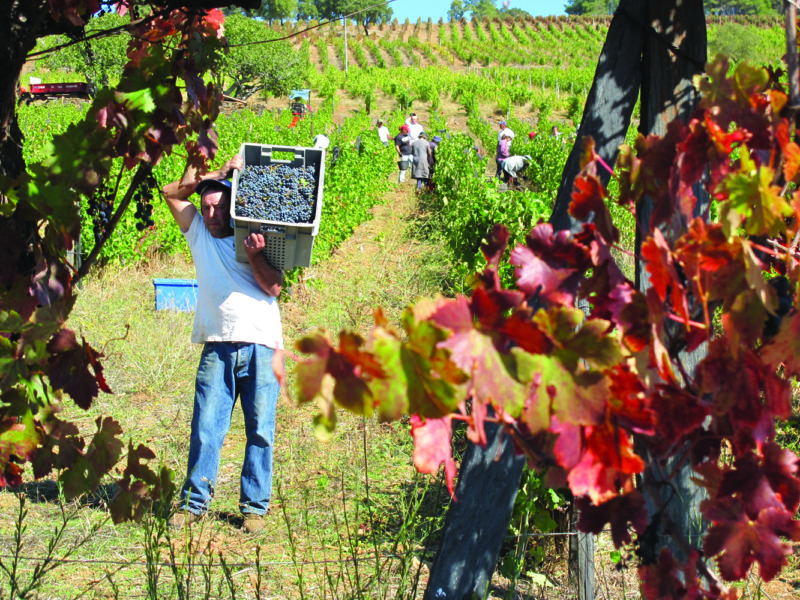
By Natalie Lariccia
Only about the size of the state of Indiana, Portugal is a small country that packs a proud punch with a vibrant culture, colorful cuisine and a wide wonderland of wines.
Although the country is commonly associated with sweet, after-dinner Port wines, sommeliers and Portuguese tourism experts encourage wine lovers to experience Portugal’s storied wine history and its vast range of whites and reds.
“Portugal, although a small country, produces an astonishing variety of wines,” says Sónia Falcão, CEO of bePortugal, an expat who oversees an online tourist-lifestyle publication that focuses on Portugal. “It has an incredible diversity of landscapes and climates … Portugal is the wine world’s best-kept secret.”
Adam Zagotti — certified sommelier and manager at Youngstown’s Station Square Ristorante, holder of a Wine Spectator Best of Award of Excellence designation — also thinks Portugal offers an impressive array of wines that can satisfy even the most finicky of wine connoisseurs.
“Recently, Portugal has stepped up its game with its table wines, and what’s neat about Portugal is its pride in and usage of its indigenous grapes,” Zagotti says.
Miles Edlmann, founder and chief executive officer of One Hour Wine, a Lisbon-based company offering pop-up wine tasting events highlighting Portuguese wine and wine culture, says it’s the number of varietals of indigenous grapes — nearly 285 -– that makes Portugal so unique.
“For a small country, we have a surprising amount of climatic variation, from the cool and rainy north, to the Atlantic influence along the coast, to the scorching interior. These very different terroirs mean that the country produces a fascinating range of distinct wine styles,” Edlmann says.
Falcão says Portugal’s two regions most renowned for wine production are the Douro and Alentejo regions.The Douro Valley is defined by the Douro River and spans from Northern Portugal to Porto. The countryside features breathtaking views of picturesque, stepped vineyards and a varying summer and winter climate perfect for producing a wide range of varietals, she says.
The Alentejo region, located east of Lisbon, features rolling fields bordering coastlines. This area is home to crisp, full-bodied whites and reds.Portugal has been producing wines for thousands of years, and its wine culture is steeped in history, Falcão says.
“Portugal also has a great balance of sun and rain, which neither bakes nor floods the soil,” Falcão says.
And it also has large-scale producers focusing on commercial distribution alongside small, individual wine producers.
Falcão says she believes Portuguese wines aren’t as widely known as French and Italian wines because of strict export laws on Portuguese wines. She anticipates that may change soon with Portugal becoming a more popular tourism destination.
Edlmann says Portugal’s wine future is bright. “Quality goes on improving, and the wines are disproportionally a good value, but we need to focus more on building up the critical mass required to make greater inroads into export markets,” he says.
To fully experience all the splendor Portuguese wines have to offer, Falcão, Zagotti and Edlmann all agree on one suggestion: you have to visit and see and sample for yourself.
“To really get the full (scope) of Portugal table wine, you really have to go there,” Zagotti says. “Once in a while, you will find (Portuguese) wines in the store, but they tend to be from the Douro Valley or a Port.”
Falcao and Zagotti encourage tourists and those interested in Portuguese wines to start by sampling the popular Vinho Verde, commonly known as “green wine.” Vinho Verde is a slightly carbonated wine with a fresh, crisp flavor that pairs well with fresh shellfish.
For those who would like to expand their Portuguese wine expertise, Zagotti suggests starting with a sample from larger Portuguese wine producers such as Quinta do Crasto or the Paxis line of wines from DFJ Vinhos and pairing these wines with a traditional Portuguese appetizer or dish for an authentic experience.
And, of course, you owe it to yourself to sample a Port. Falcão recommends those who want to try Port experience it in its home – the city of Porto. Visitors can book a tour in a Port cellar, sample a few on-site and learn more about its production.
Zagotti says it is important to know whether the Port is ruby or tawny. The ruby style is more approachable when it is young, offers a brighter flavor and spends less time in the barrel and more time in the bottle. Tawny, meanwhile, will age more in the barrel and offers a deeper, more complex flavor.
Although some people find Port too sweet, Zagotti suggests trying and judging for yourself. He recommends starting with a basic, non-vintage ruby first and then comparing aromas, colors and flavors with a 20-year tawny. He also encourages a sample of Madeira, another sweeter Portugal wine that can offer rich, caramel flavors.
Of course, Portugal also is one of the largest cork producers in the world – the preferred closure for virtually every bottle of Portuguese wine.
“I challenge anyone to find a bottle of wine in Portugal with a screw cap,” Falcão says.

